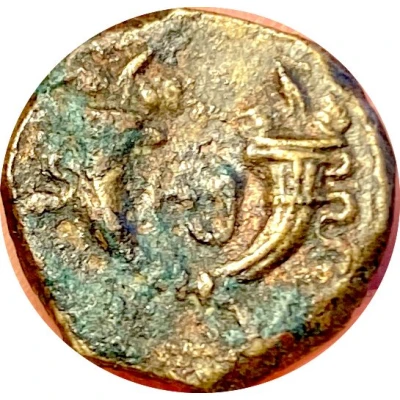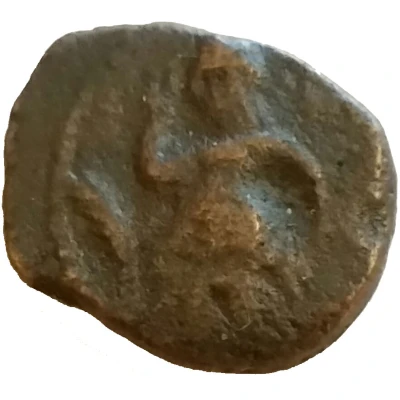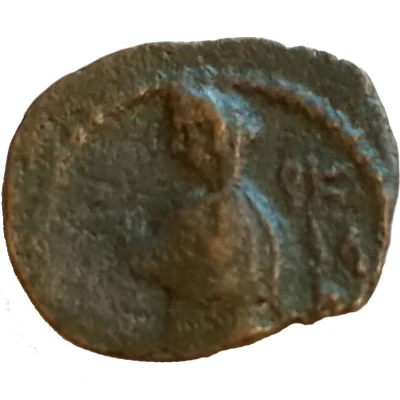


Obverse © @Adilson
Æ14 - Aretas IV and Phasaelis 4 BC - 5 AD
| Bronze | 2.58 g | - |
| Issuer | Nabataean Kingdom (Northern Arabia) |
|---|---|
| King | Aretas IV (9 BC - 40 AD) |
| Princess | Phasaelis (4 BC - 23 AD) |
| Type | Standard circulation coin |
| Years | 4 BC - 5 AD |
| Currency | Shekel |
| Composition | Bronze |
| Weight | 2.58 g |
| Size | 14.0 × 13.5 mm |
| Shape | Square (irregular) |
| Technique | Hammered |
| Orientation | Coin alignment ↑↓ |
| Demonetized | Yes |
| Updated | 2024-10-09 |
| Numista | N#370863 |
|---|---|
| Rarity index | 90% |
Reverse
Two parallel cornucopias, tops left, tided with ribbon, palm frond on right.
Script: Nabataean
Lettering: PṢ'L
Unabridged legend: Phasaelis
Comment
Phasaelis is Aretas IV's fourth child with Queen Huldu. None of the couple's other three children have been named on the coins. The year 4 BC corresponds to the entry into office of Herod Antipas, after the death of his father Herod the Great. It has therefore been speculated that Antipas was married on this occasion. The series of coins issued in the name of Phasaelis could therefore commemorate the marriage of the princess.Interesting fact
One interesting fact about this coin is that it features a unique blend of ancient Arabian and Greek influences in its design. The obverse side of the coin depicts King Aretas IV and his son Phasaelis in a style that reflects the Hellenistic tradition, while the reverse side features an image of the Nabataean goddess al-Uzza, highlighting the kingdom's Arabian roots. This fusion of cultural influences is a testament to the rich cultural heritage of the Nabataean Kingdom and its strategic location at the crossroads of ancient trade routes.



